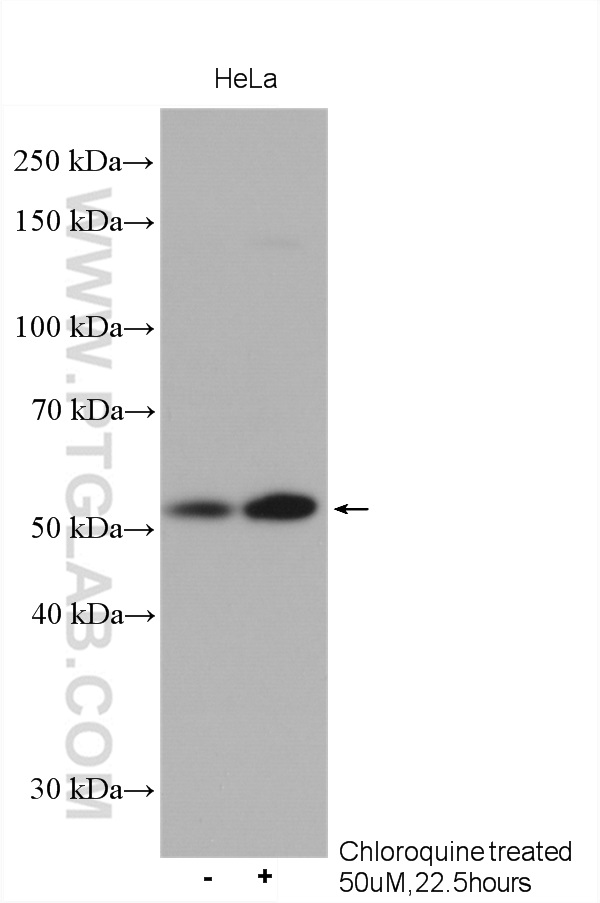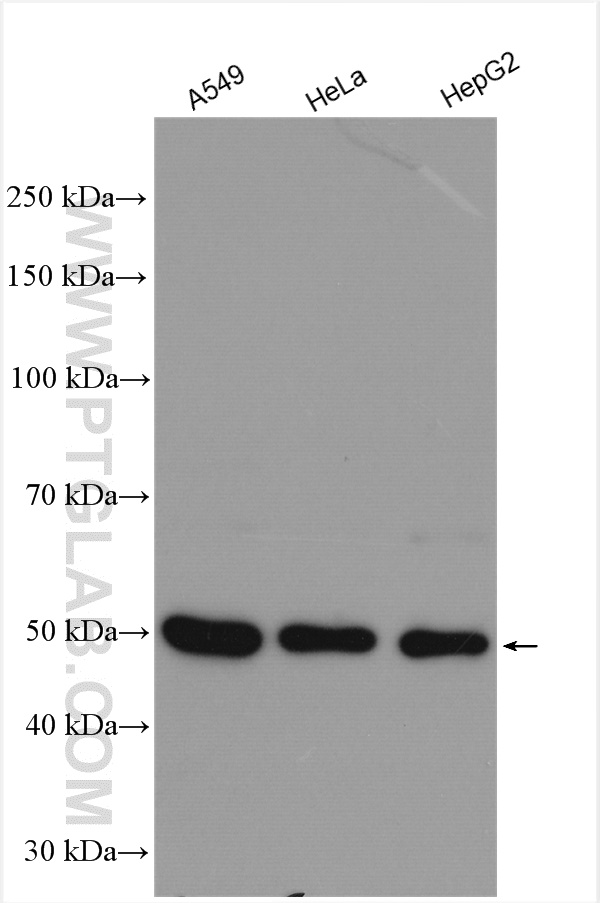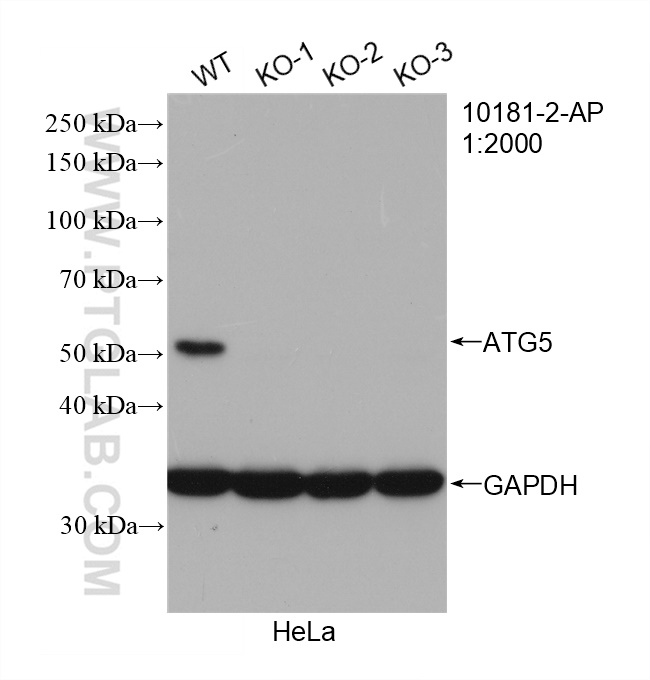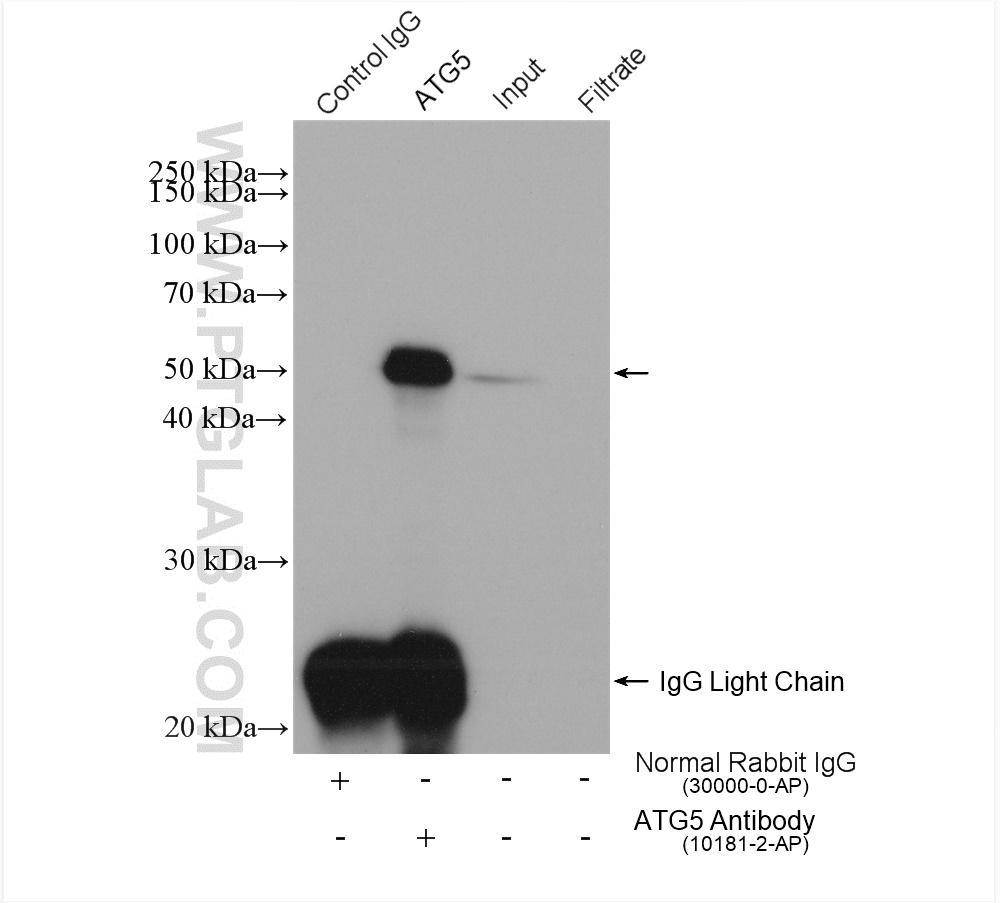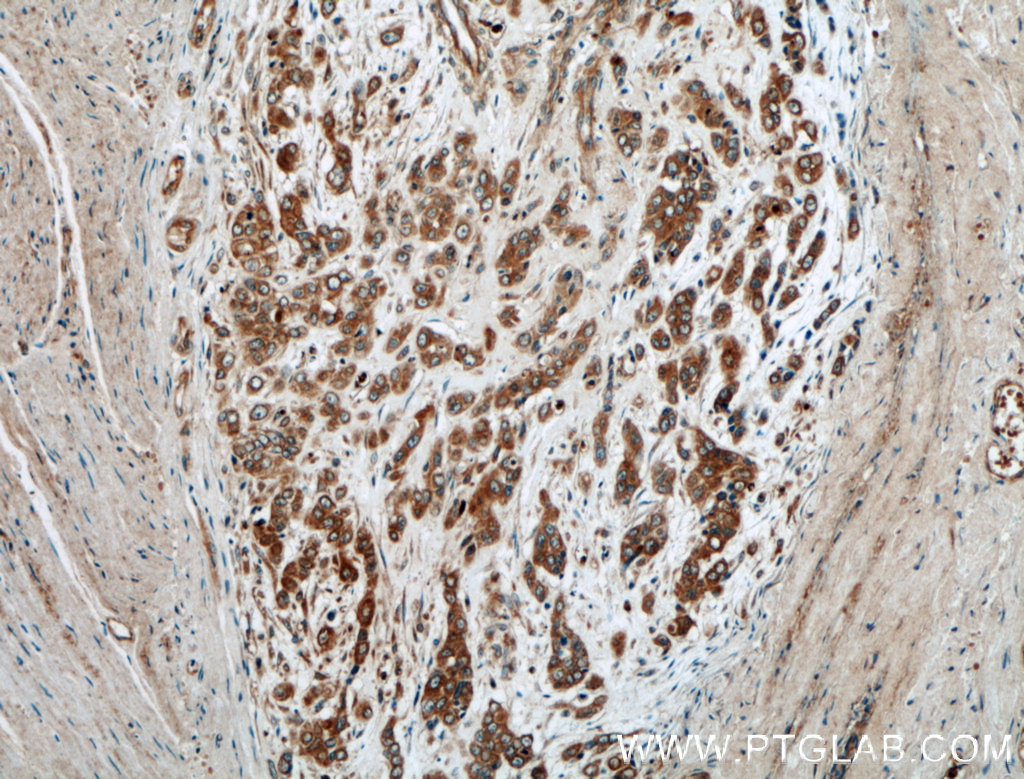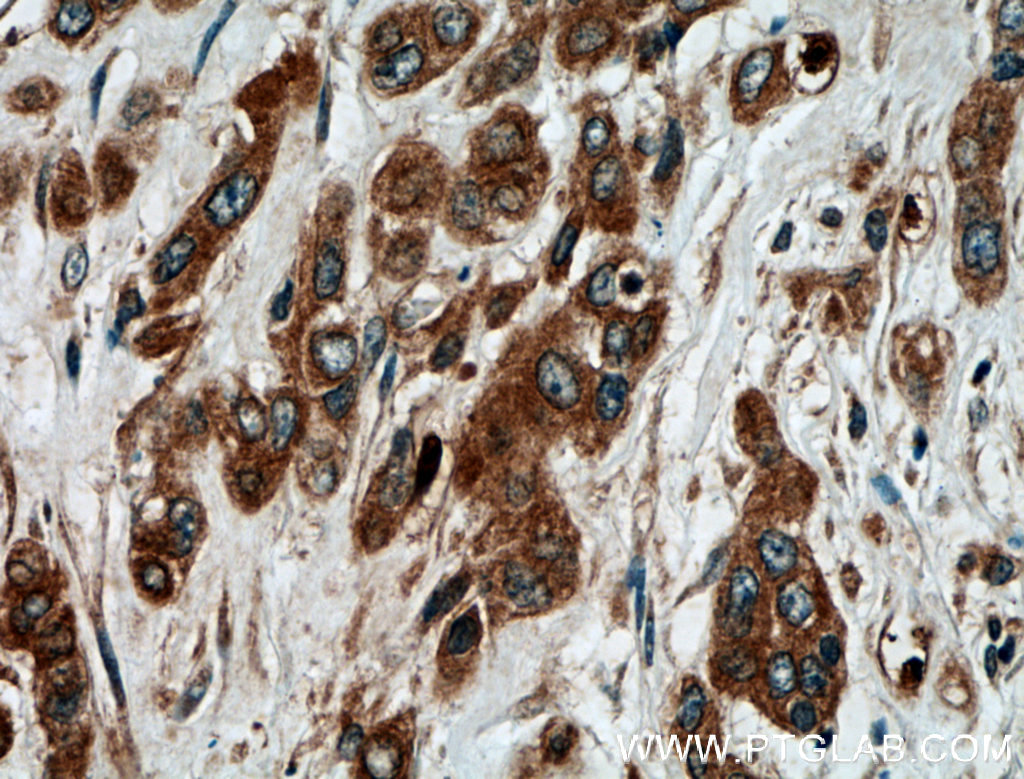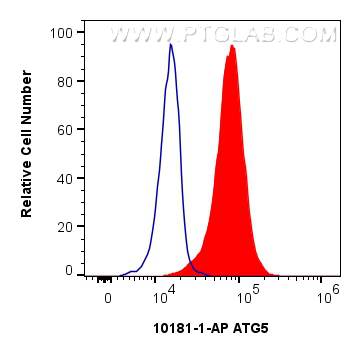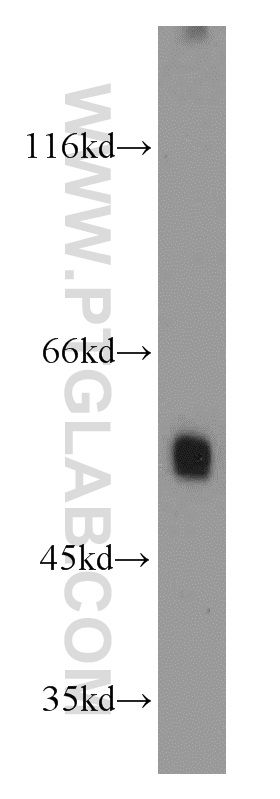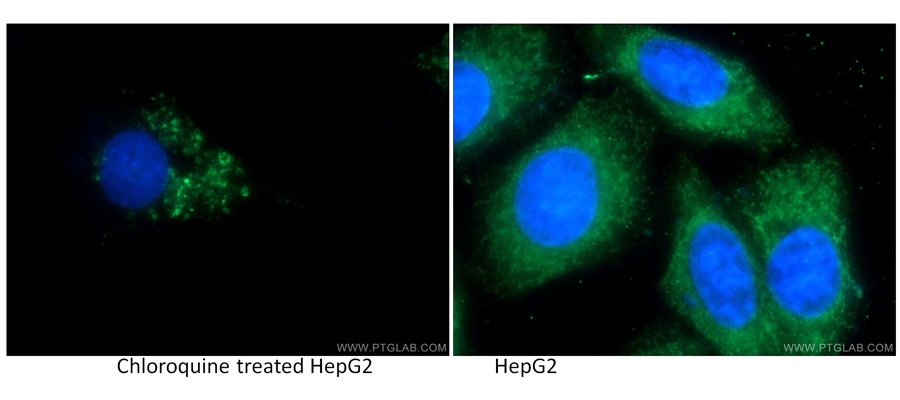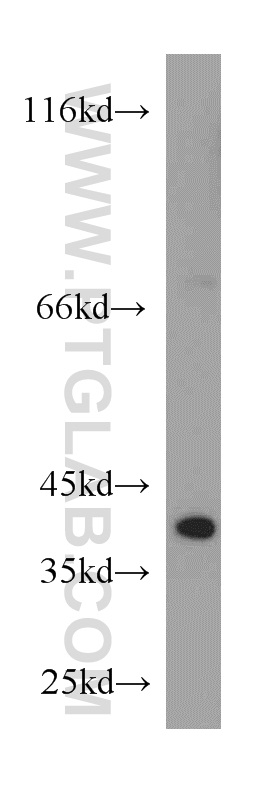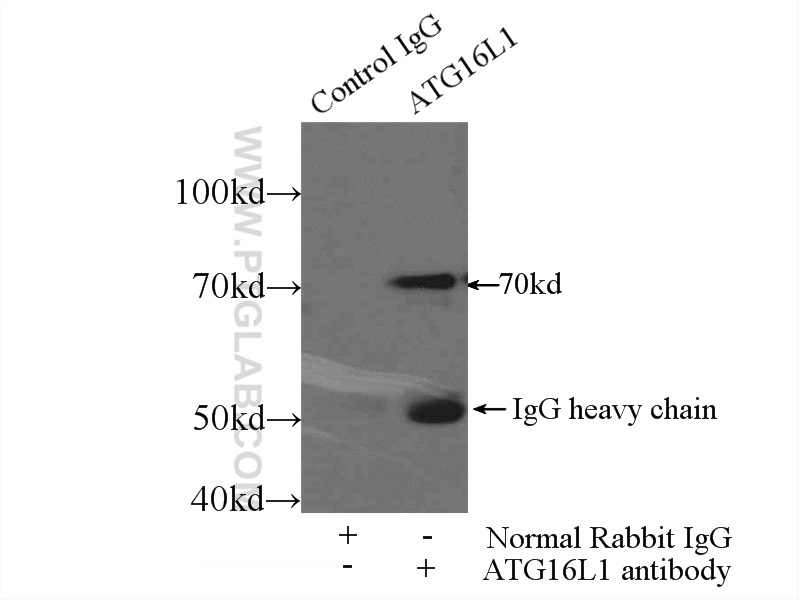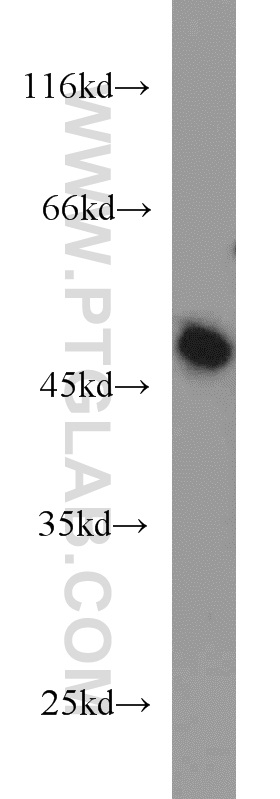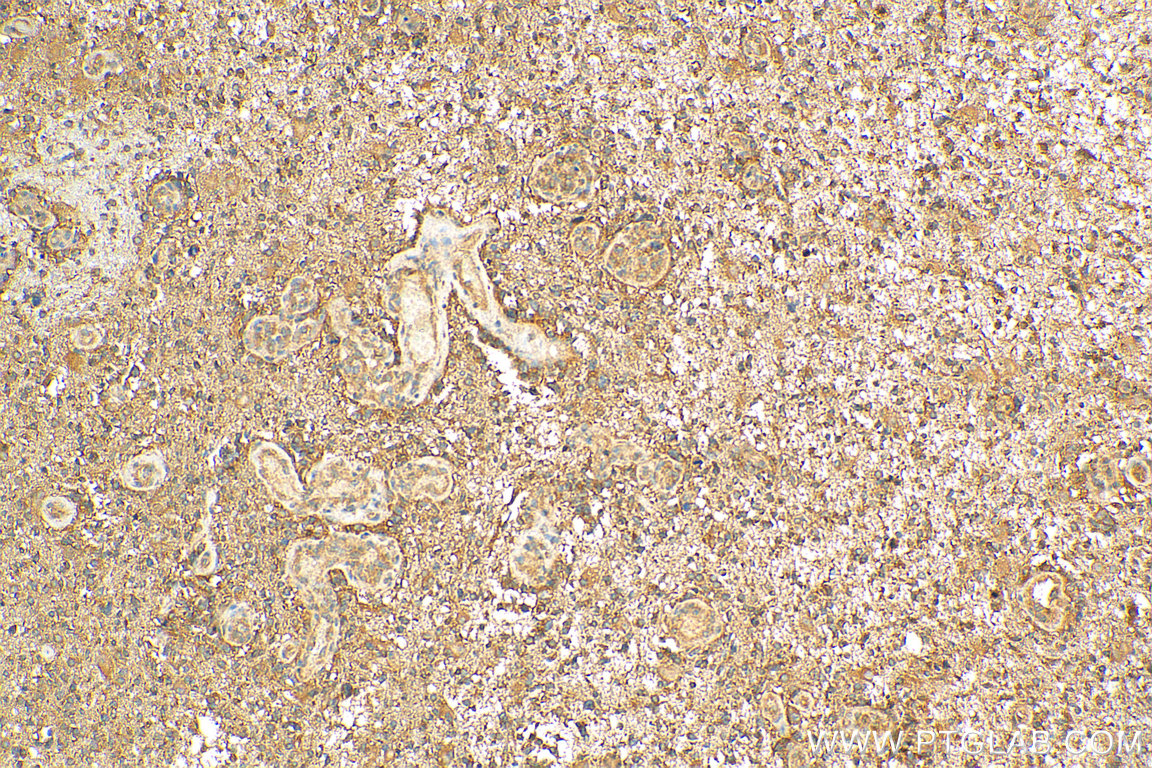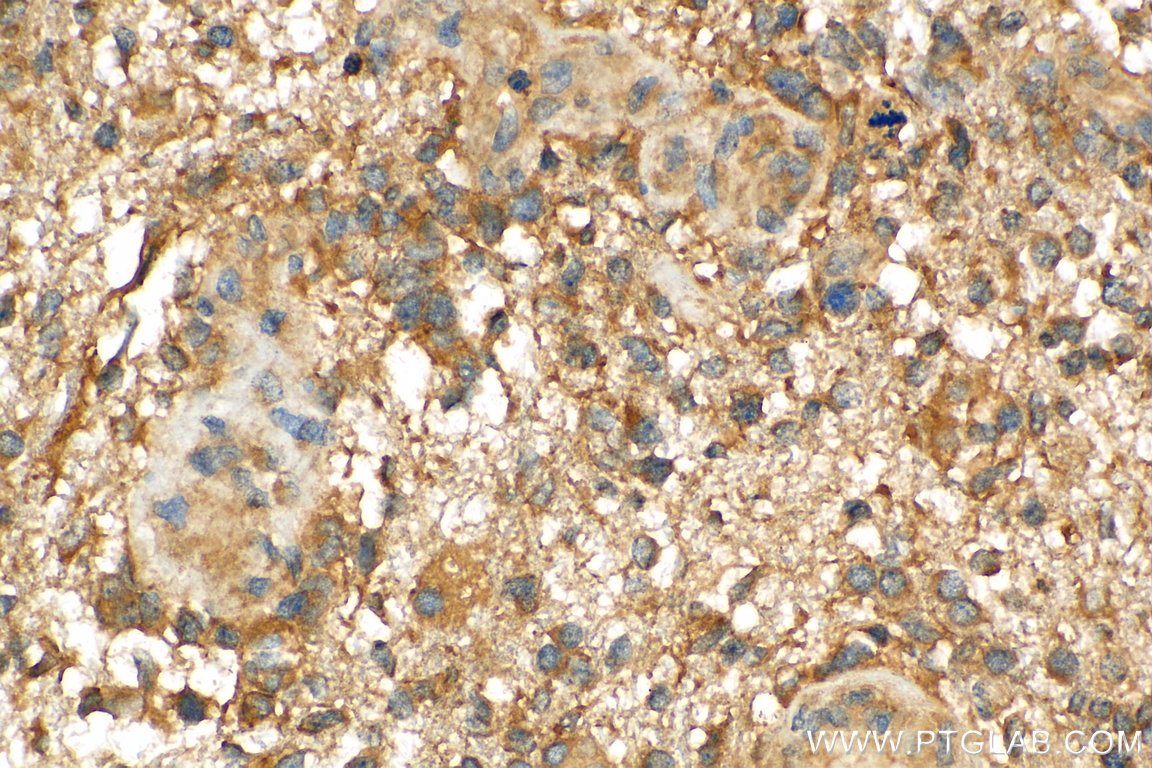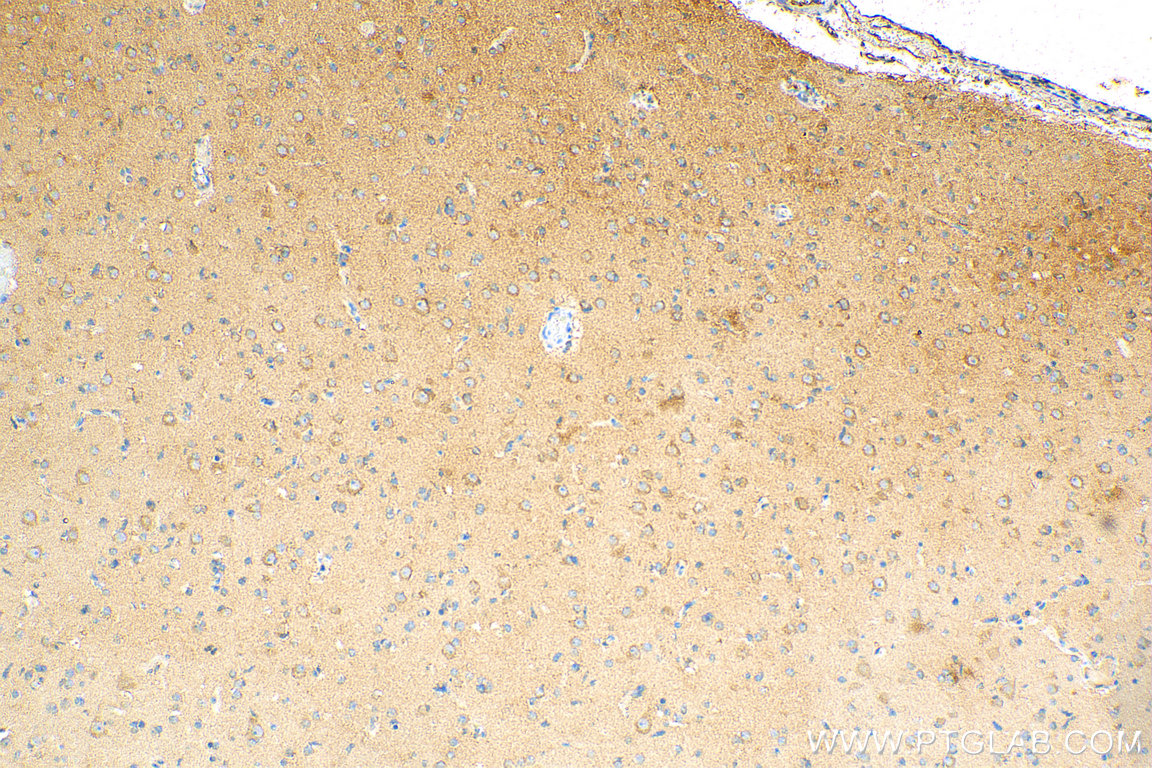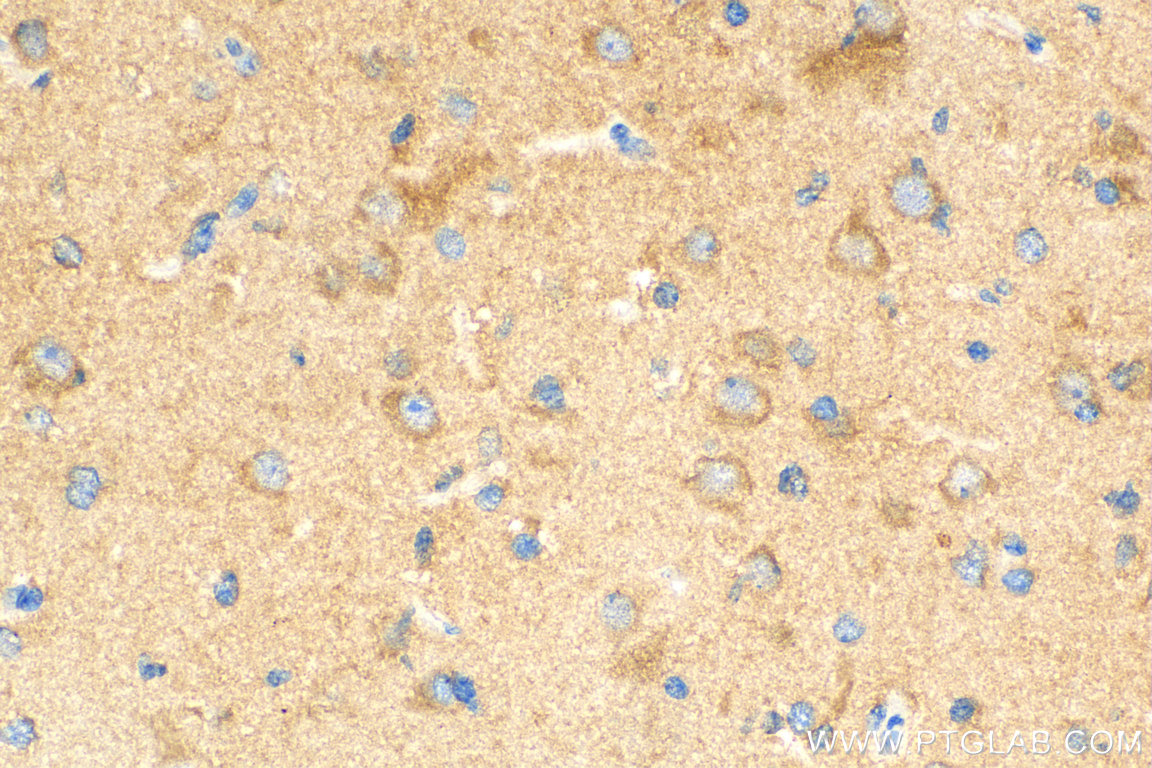- Featured Product
- KD/KO Validated
ATG5 Polyclonal antibody
ATG5 Polyclonal Antibody for FC, IHC, IP, WB, ELISA
Host / Isotype
Rabbit / IgG
Reactivity
human, mouse, rat and More (6)
Applications
FC, IHC, IP, WB, ELISA and More (1)
Conjugate
Unconjugated
262
验证数据展示
经过测试的应用
| Positive WB detected in | A549 cells, HeLa cells, mouse kidney tissue, HepG2 cells |
| Positive IP detected in | HeLa cells |
| Positive IHC detected in | human colon cancer tissue, human gliomas tissue Note: suggested antigen retrieval with TE buffer pH 9.0; (*) Alternatively, antigen retrieval may be performed with citrate buffer pH 6.0 |
| Positive FC detected in | HepG2 cells |
推荐稀释比
| Application | Dilution |
|---|---|
| Western Blot (WB) | WB : 1:1000-1:5000 |
| Immunoprecipitation (IP) | IP : 0.5-4.0 ug for 1.0-3.0 mg of total protein lysate |
| Immunohistochemistry (IHC) | IHC : 1:50-1:500 |
| Flow Cytometry (FC) | FC : 0.40 ug per 10^6 cells in a 100 µl suspension |
| It is recommended that this reagent should be titrated in each testing system to obtain optimal results. | |
| Sample-dependent, Check data in validation data gallery. | |
产品信息
10181-2-AP targets ATG5 in WB,IP,IHC,FC,ELISA applications and shows reactivity with human, mouse, rat samples.
| Tested Applications | FC, IHC, IP, WB, ELISA |
| Cited Applications | WB,IHC,IF,FC |
| Tested Reactivity | human, mouse, rat |
| Cited Reactivity | human, mouse, rat, goat, chicken, monkey, pig, bovine, grouper |
| Immunogen | ATG5 fusion protein Ag0214 种属同源性预测 |
| Host / Isotype | Rabbit / IgG |
| Class | Polyclonal |
| Type | Antibody |
| Full Name | ATG5 autophagy related 5 homolog (S. cerevisiae) |
| Synonyms | APG5, APG5 LIKE, APG5L, Apoptosis specific protein, ASP, ATG5, Autophagy protein 5, hAPG5 |
| Calculated Molecular Weight | 32 kDa |
| Observed Molecular Weight | 32 kDa, 40-45 kDa, 50-55 kDa |
| GenBank Accession Number | BC002699 |
| Gene Symbol | ATG5 |
| Gene ID (NCBI) | 9474 |
| RRID | AB_2062045 |
| Conjugate | Unconjugated |
| Form | Liquid |
| Purification Method | Antigen affinity purification |
| UNIPROT ID | Q9H1Y0 |
| Storage Buffer | PBS with 0.02% sodium azide and 50% glycerol pH 7.3. |
| Storage Conditions | Store at -20°C. Stable for one year after shipment. Aliquoting is unnecessary for -20oC storage. |
背景介绍
实验方案
| Product Specific Protocols | |
|---|---|
| WB protocol for ATG5 antibody 10181-2-AP | Download protocol |
| IHC protocol for ATG5 antibody 10181-2-AP | Download protocol |
| IP protocol for ATG5 antibody 10181-2-AP | Download protocol |
| Standard Protocols | |
|---|---|
| Click here to view our Standard Protocols |
发表文章
| Species | Application | Title |
|---|---|---|
Signal Transduct Target Ther Targeting CRL4 suppresses chemoresistant ovarian cancer growth by inducing mitophagy | ||
Cell Res Degradation of lipid droplets by chimeric autophagy-tethering compounds.
| ||
Mol Cell Syntaxin 13, a Genetic Modifier of Mutant CHMP2B in Frontotemporal Dementia, Is Required for Autophagosome Maturation.
| ||
Adv Sci (Weinh) SETDB1 Methylates MCT1 Promoting Tumor Progression by Enhancing the Lactate Shuttle | ||
Autophagy Autophagy mediates the clearance of oligodendroglial SNCA/alpha-synuclein and TPPP/p25A in multiple system atrophy models | ||
J Clin Invest Acetaldehyde dehydrogenase 2 interactions with LDLR and AMPK regulate foam cell formation. |
